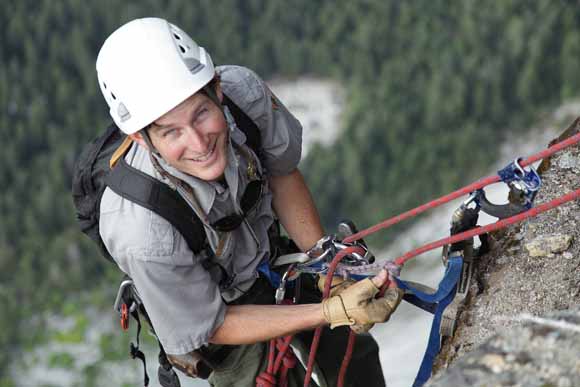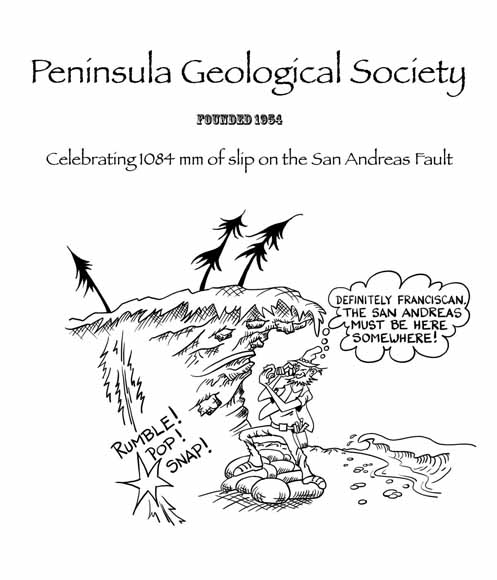
Presents
Location: Stanford University
This will be the 452nd meeting since 1954

Yosemite National Park contains some of the world's most iconic landscapes, but rockfalls from the soaring cliffs pose considerable hazard and risk to nearly four million annual visitors. This talk will summarize the geomorphic history of Yosemite Valley, review recent notable rockfalls, and describe how the application of new analytical tools such as airborne and terrestrial laser scanning, highresolution photography, cliff monitoring, computer simulations of rockfall runout, and cosmogenic exposure dating provide quantitative data that improve our understanding of rockfalls and our ability to mitigate the resulting hazard and risk.

Greg Stock
Greg Stock is the first-ever Park Geologist at Yosemite National Park. Greg attended Humboldt State University for a bachelor's degree in geology, and UC Santa Cruz for a PhD in earth science. His research interests are primarily in geomorphology, and include glacial and fluvial erosion, geochronology, and hillslope processes such as rockfalls and debris flows. Greg has authored or coauthored more than 100 scientific papers and abstracts on Sierra Nevada geology, and is coauthor of the book Geology Underfoot in Yosemite National Park. He lives in Yosemite Valley with his wife and daughter.
Reducing Rockfall Risk in Yosemite National Park, by Greg M. Stock and Brian D. Collins, Eos, 22 July 2014
Quantitative Rock-Fall Hazard and Risk Assessment for Yosemite Valley, Yosemite National Park, California, by Greg M. Stock, Nicolas Luco, Brian D. Collins, Edwin L. Harp, Paola Reichenbach, and Kurt L. Frankel, USGS Scientific Investigations Report 2014–5129
Determining the Pace of Landscape Evolution in the Sierra Nevada, California, Using Cosmogenic Dating of Cave Sediments , by Greg Stock, Peninsula Geological Society presentation, November 11, 2003Reservations: The preferred way to make reservations is simply to email Mike Diggles at mike@diggles.com by Mar. 8, tell him you will attend, commit to pay, and bring your payment to the meeting. Mike always emails a confirmation; if you don’t get one, assume email crashed yet again and email him a second time. A check made to “PGS” is preferred, payable at the meeting.
If you want to pay in advance:
Everyone (including Stanford folks now) Please make dinner reservations by Mar. 8. Contact Mike Diggles, at U.S. Geological Survey, 345 Middlefield Road, MS-910 Menlo Park, CA 94025, Tel.: (650) 329-5404. Send check made out to “PGS” to Mike.
Dinner and the social hour is $35.00; this includes $5 that we use to help pay for students who are only $8.00 (also partially subsidized thanks to the School of Earth Sciences, Stanford University (Note, no-show reservations owe the full price).
Doris, whose wonderful crew prepares our meals, asked that we let you know that people who are late RSVPing and people who show up without a reservation will be welcome but that they may be eating on paper plates with plastic utensils (food supply permitting).
Dues for Academic Year 2014-2015 ($10.00) should be sent to Mike Diggles, U.S. Geological Survey, 345 Middlefield Road, MS-910, Menlo Park, CA 94025. Mike’s phone: (650) 329-5404.
Officers: Brad Buerer, President; Sarah Nagorsen, Vice President; Mike Diggles, Secretary-Treasurer; Elizabeth Miller, PGS Stanford University Coordinator


PGS cartoon by Rick Blakely
Date created: February 15, 2015
Last modified: June 6, 2015
Created by: Mike Diggles, Webmaster-Secretary-Treasurer, PGS.